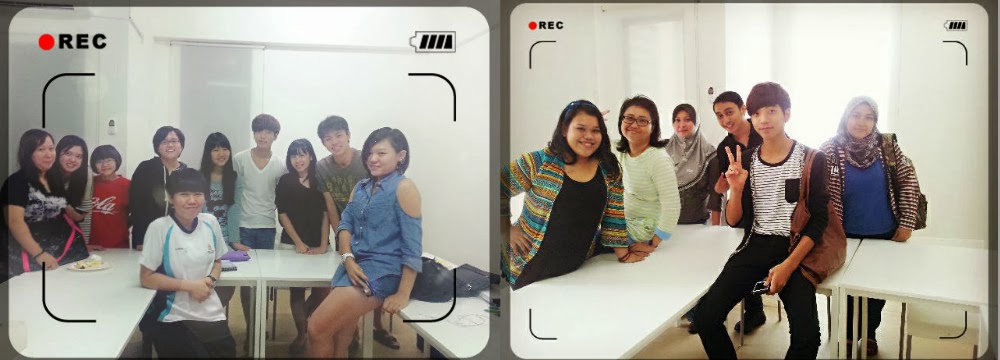We went through some blackout during our class and somehow no one proposed to stop the class.Fortunately, it resumed as usual in 10mins.
Saturday, August 19, 2017
Sunday, August 13, 2017
13 August 2017- Japanese class
Morning class with Carmen,Jovi and Teressa.
We usually doing class together on Sunday morning and today is the first time we wore same navy blue outfit ever. I always feeling I am very lucky to meet them because it is really rare to have someone who can really share what we usually think from time to time and maybe sometimes we are influencing each other too.
Today class was about asking permission and forbid someone with てもいいですかand てはいけません.I was kinda shocked when they can handled the te conjugation so fluently in short period... erm, maybe the countless 113 verbs drill do helps a lot.
One confusing point for today is why we have to use もらってもいいですかinstead of あげてもいいですか when we asked someone to give us something. Isn't it sounds more valid with the latter one as it literally means GIVE.Well, if you put it this way like, "Can I have it ? or Can I receive it? "It makes some sense why we have to put もらいますin this context.Same goes with かしてもいいですか vs かりてもいいですか.You will say "Can you lend me...? Instead of can you borrow me...? as the subject of the sentences is totally different. When we say かします,it basically sounds like "I lend something to.... Or someone lend something to me or someone else.(sounds like you lend something out to something) So when you ask someone to lend or borrow something, you supposedly means like "Can you lend something to me? "instead of "can you borrow something from me? "
A:傘をかしてもいいですか。Can you lend me the umbrella?
B:いいですよ。Sure.
AはBに傘を借りました。A borrowed an umbrella from B.
Kinda easy, is it? Hope it helps on your learning too.
Cheers and have a nice weekend.
Tuesday, August 8, 2017
8 August 2017-Japanese class
Today was a busy day with few Japanese class lined up without any break in Setapak branch.Apart from new class, I was having class with Kenneth and Belle about Te form of Japanese,which is essential in Japanese language.
Basically there is a lot of conditions to use this form and the ending is totally different from what we learned so far. Thus, it is not so easy to go through transition between Minna no nihongo 1,part 1(chapter 1-13)and part 2(chapter 14-25).I think most of you know te form from ganbatte or chotto matte, right?
By the way, such a coincidence for them to wear such a similar clothes, lol..
I will go to Japan on 21 August onward with them, hopefully everything is okay and not too hot .
Stay tuned on our September intake soon. Good night;)
Monday, July 10, 2017
10 July 2017 - Japanese class diary
1-chap 19
ADJ+なりました=became.....
2-chap 36
Verb +なりました=became (start to do....)
















_meitu_1.jpg)





